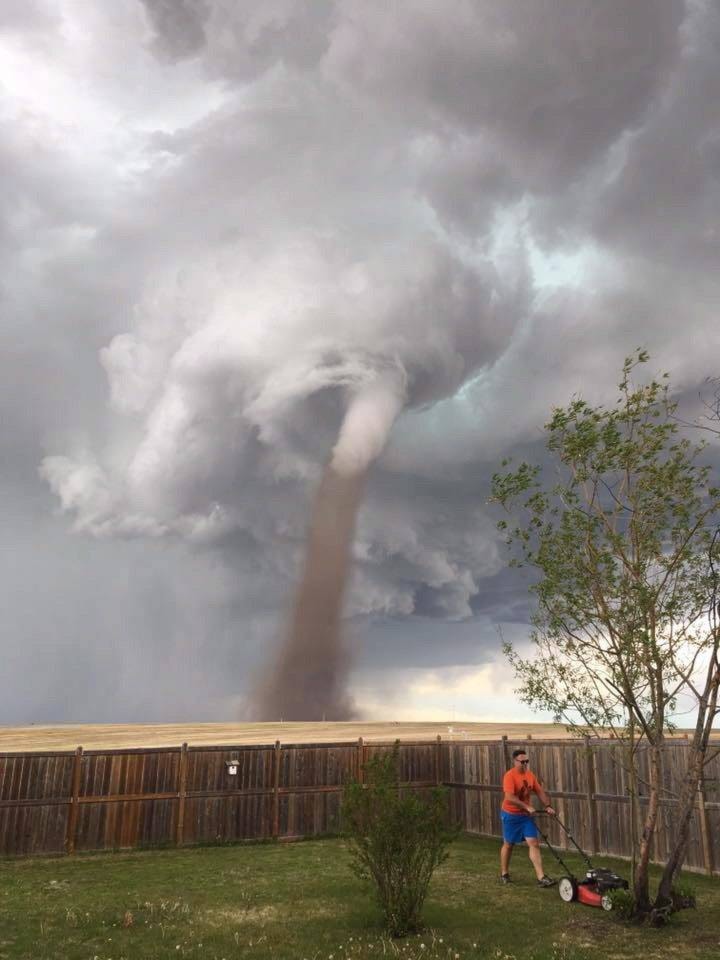EDMONTON — Alberta storm chaser Chris Kiernan has hardly had a moment’s rest since the start of the tornado season last month.
“This season has been quite more active,” said Kiernan, who is based out of Beaumont, about 30 kilometres south of Edmonton.
“In the last two weeks, I have been out for the majority of the days and I have landed some pretty good storms.”
Kiernan said there are usually a lot of “bust days” with no storm activity in a target area, but so far that’s happened just a single time this year.
“To have it only once is something for me,” he said. “Usually, there is a 40 per cent bust rate.”
There have been 17 probable or confirmed tornadoes in the province so far, said Kyle Fougere, meteorologist for Environment and Climate Change Canada. That number surpasses Alberta’s 30-year average of 12.
The agency reported earlier this week that there had been 18 tornadoes, but Fougere said Tuesday one of those had been downgraded.
“When we first get reports of a tornado, we’ll consider them a possible report and then we’ll either upgrade them to a probable tornado or even a confirmed tornado.”
The highest number of tornadoes in Alberta in the last 35 years has been 26 in 1988, Fougere said.
Overall on the Prairies, there have been 34 twisters this year, he said, with several weeks left in the tornado season.
There have been 13 in Saskatchewan, which has an average of 18 a year. Manitoba, with an average of 10, has had four.
Alberta has been the hardest hit because of wet weather since mid-June, Fougere said.
“When you have a trough of low pressure, you have colder air aloft and you tend to have very showery precipitation with a lot of thunderstorms,” he said. “Because we have had so many days with this thunderstorm activity, we’ve ended up with more tornadoes.”
A high-pressure system with more summerlike temperatures has moved through the area, but more tornadoes could still be on the way, Fougere predicted.
“It’s certainly like we will see more,” he said. ”We definitely have that pattern on the horizon.”
Environment and Climate Change Canada rated a tornado that hit the southern Alberta community of Carmangay last week as an EF1, Fougere said, but it could be upgraded.
A tornado is rated EF1 when it packs winds of 138 to 177 km/h and causes moderate damage. The highest rating is EF5.
“We are still investigating some of these tornadoes. A lot of times we do get information that comes in later and we do change some of the ratings.”
He added that the most significant tornado activity to happen this year was in central Alberta and western Saskatchewan between June 28 and 29.
There were nine confirmed tornadoes in the area for those two days and there’s a possibility the weather agency will confirm more.
There’s been activity further north too.
Fougere said there was an EF1 tornado on June 2 in the Fort Smith area of the Northwest Territories — the fourth tornado ever reported in the territory.
“A lot of these storms form over areas that do not have much population density, so we don’t get reports of it,” Fougere said. “It’s estimated that we get many more tornadoes than we actually have reported.”
Kiernan, who helps run the Alberta Storm Chasers Facebook page, said he has seen more interest in the hobby this year because of all the unsettled weather.
He warns that novice storm chasers should know there are risks.
“Every once in a while they’ll land something they weren’t prepared to deal with and don’t have escape routes or anything, so it’s always important to do your research before you head out.”
